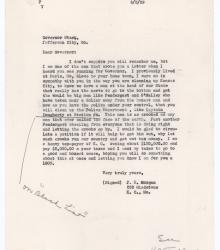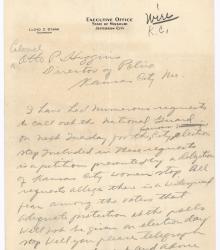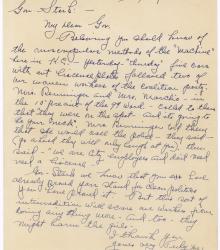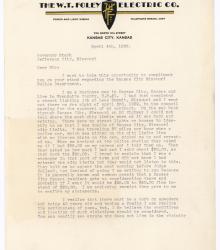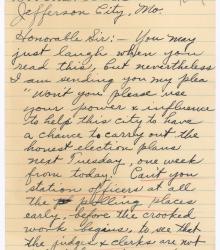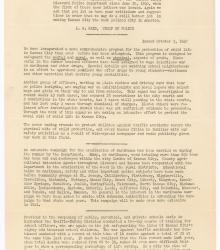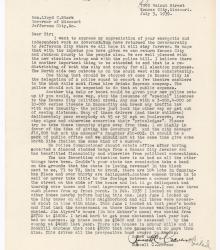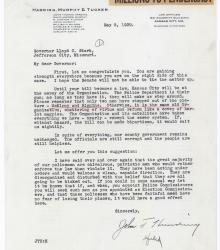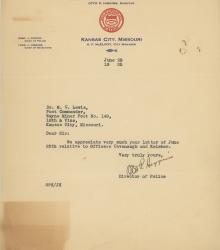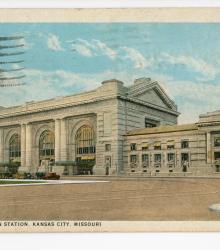Letter from J. R. Morgan to Governor Lloyd C. Stark regarding Stark's work cleaning up Kansas City and its police department. He describes Captain Dougherty at Station #4 as "crooked as any man that ever walked the face of the earth."
Kansas City Police Department
Letter dictated for a telegram from Governor Lloyd C. Stark to Colonel Otto P. Higgins, Kansas City Director of Police, regarding the requests he has received for National Guard protection for the upcoming election, and asking for his opinion of the matter.
Letter from Bessie Peppard, to Governor Lloyd C. Stark, describing local women in her political organization being threatened by city employees.
Letter from W. T. Foley to Governor Lloyd Stark describing an encounter with the Kansas City, Missouri, Police Department in which he was arrested at the city limit for speeding and had money taken by the officers.
Letter signed "A Kansas Citian" to Governor Lloyd C. Stark, requesting assistance in ensuring honest elections in Kansas City by protecting voters, judges, and clerks.
Kansas City Police Department newsletter from October 1940, sent to "leading Kansas Citians." The newsletter describes programs to protect local children from traffic and "exhibitionists and moral lepers," to eliminate marijuana growing within the city limits, and police training.
Letter from Russell C. Cravens to Governor Lloyd C. Stark, thanking him for his work in cleaning up elections and the Kansas City police department.
Letter from George E. Kimball to Governor Lloyd C. Stark, discussing corruption in public service. Kimball identifies himself as "a former judge of the Jackson County Court, a former City Comtroller of Kansas City, and a Republican candidate for Mayor of Kansas in 1930." He writes to recommend Fred H.
Letter from John T. Harding to Governor Lloyd C. Stark, discussing corruption in the city and county government, as well as the local police department. He tells Stark that until he enacts new laws, "Kansas City will be at the mercy of the Organization.
Letter from Kansas City, Missouri Department of Police Director Otto P. Higgins to Wayne Miner Post No. 149 Post Commander Dr. Milton C. Lewis. Higgins writes that he appreciates Lewis's letter concerning police officers Cavanaugh and Keleher.
On June 17, 1933, four law enforcement officers and their prisoner, Frank Nash, were fatally wounded in a botched rescue attempt outside Union Station. The story of the Union Station Massacre, as it became known, centered on Frank Nash, who had been convicted of three separate crimes of a serious nature: murder, armed burglary, and then assault.
